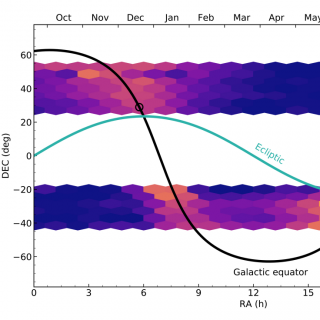Numerical simulations of dark matter haloes produce polytropic central cores when reaching thermodynamic equilibrium
Self-gravitating astronomical objects often show a central plateau in the density profile (core) whose physical origin is hotly debated. Cores are theoretically expected in N-body systems of maximum entropy, however, they are not present in the canonical N-body numerical simulations of cold dark matter (CDM). Our work shows that despite this
Sánchez Almeida, Jorge et al.
Advertised on:
6
2021
